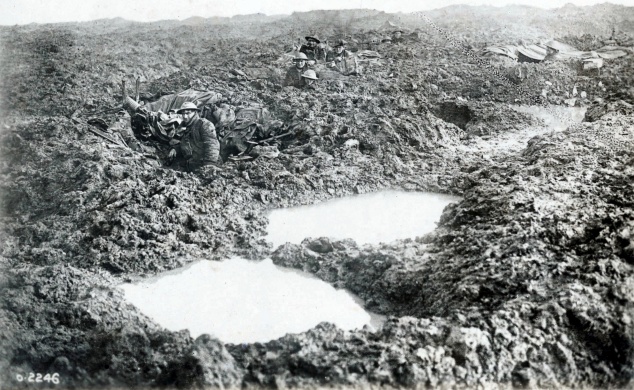
Canadian Machine-Gunners at Passchendaele, October 1917 (NAC)
Today marks the centenary of the start of the Third Battle of Ypres, popularly known as Passchendaele, after the final two phases of the offensive which lead to the capture of Passchendaele Ridge and the village in November 1917.
The first phase of the battle, which took place on this day in 1917, was the Battle of Pilckem Ridge which saw an attack at 3.50am, dawn a hundred years ago, from Boesinghe in the north to the Bellewaarde Ridge and down to the Menin Road at Hooge. British units in these areas were part of Gough’s Fifth Army and took the majority of their objectives. However, there were substantial losses on this day and it was the bloodiest single day at Ypres in all four years of war with over 6,200 soldiers killed in action.

Stretcher Bearers in the mud, Third Ypres 1917 (IWM)
That afternoon it began to rain, and very quickly the summer of 1917 turned into the wettest in living memory. Shells smashed the landscape, and along with it all the drainage, and the water collected in trenches, dugouts, shell-holes and turned the mud into liquid mud in many place: men, mules and horses, guns and tanks, all disappeared. A soldier of the Artists Rifles later recalled the battlefield conditions by October 1917.
Dawn reveals to us a sight which nobody could visualize without having actually seen it. We can stand up and see the round of the horizon. It is like being on the sea, but our sea is a sea of mud. There is not a blade of grass visible nor a spot of color anywhere.
Only the least undulations tend to relieve the monotony of complete flatness. In the middle distance there is something which might by exaggeration be called a “hill.” We imagine that this must be the celebrated Passchendaele Ridge. Just before us our front is hidden for some distance by a fold of the ground, which conceals the bed of the Paddebeeke. And the mud is pitted with craters of various sizes and depths, most of them half full of water, and set as close together as the pockets of a bagatelle table. It used to be said that no two shells fell in the same place, and this was generally true. The Somme and Passchendaele provided the exceptions. In both these favored districts there were shell-holes within shell-holes within shell-holes. (War is War by X-Private X, London 1930, p. 125)
But Passchendaele was a battle of contrasts. At one point the weather turned for the better and the ground was so hard that shells bounced off it. Gough’s Fifth Army was relieved by Plumer’s Second Army and in the final phase Passchendaele was taken by British and Canadian troops: the Canadians losing over 16,000 men in ten days fighting, and their battle for the village ending with a snowstorm which brought fighting to a conclusion.

British MkIV Tank floundered in the mud, Third Ypres 1917 (IWM)
Rightly or wrongly, for many, Passchendaele has become one of the iconic symbols of the Great War: for most a symbol of pointless slaughter. The images from that battle have arguably defined our perception of the First World War. Today thousands will gather at Ypres and stand in Tyne Cot Cemetery to remember one of the most terrible battles of a long and bloody war. Whether we see victory in the mud of Flanders will remain the hot topic of historians for generations, but for most they are happy to remember, and see Flanders returned to the farmland it once was. Their connection to Passchendaele will be a personal one, and it is this connection that draws so many to the subject of the Great War.






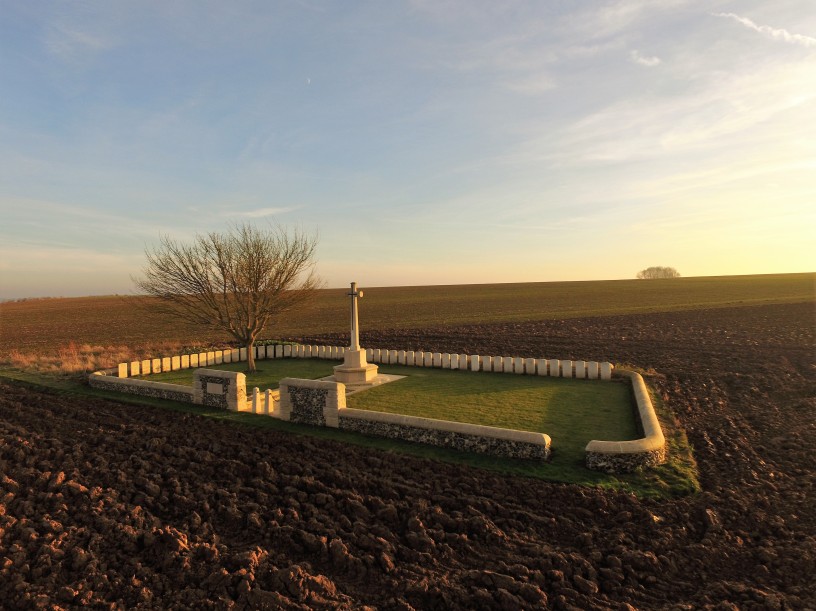


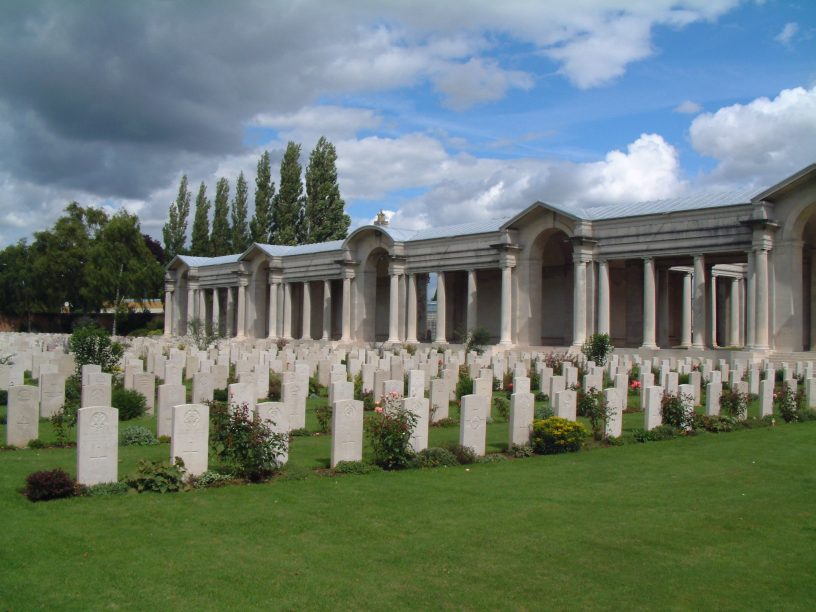






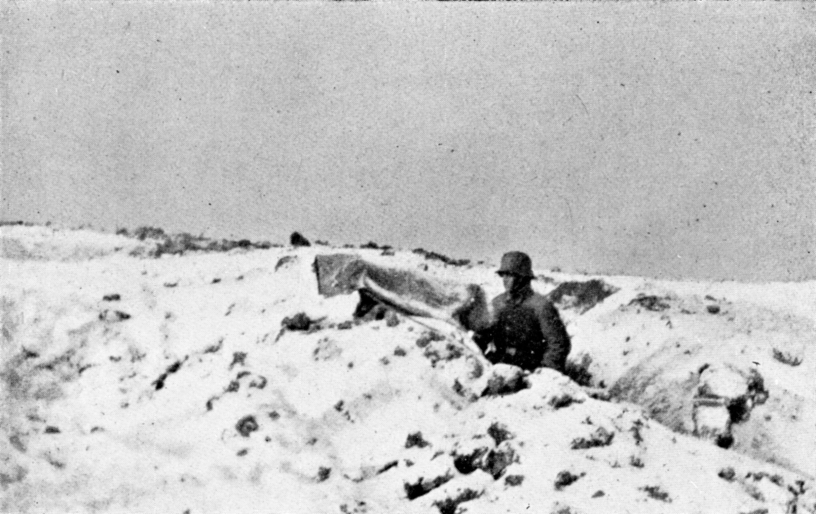

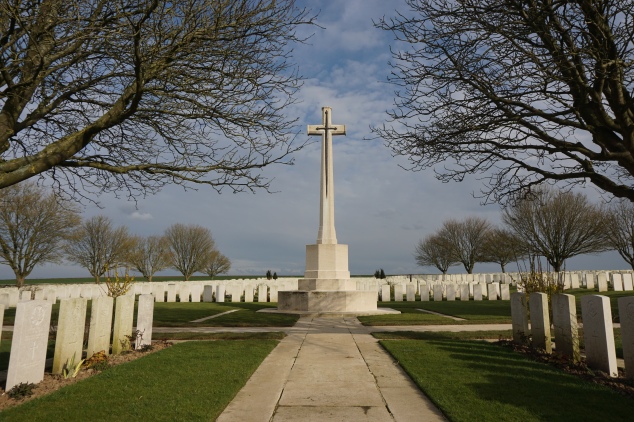

 prior to the Third Battle of Ypres; presumably another volume will cover that battle and the rest of 1917? The second section contains biographies of the men awarded the VC during this period. Packed with information and obviously the result of a huge amount of research, this is an excellent and highly recommended companion to those award the highest honour from the Somme to Arras and Ypres. There are useful maps, good photographs and handy information on visiting the battlefields. Available on the
prior to the Third Battle of Ypres; presumably another volume will cover that battle and the rest of 1917? The second section contains biographies of the men awarded the VC during this period. Packed with information and obviously the result of a huge amount of research, this is an excellent and highly recommended companion to those award the highest honour from the Somme to Arras and Ypres. There are useful maps, good photographs and handy information on visiting the battlefields. Available on the 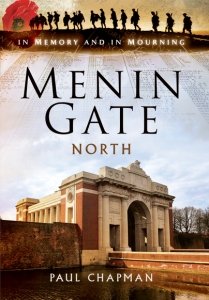 is I suspect how the author anticipates you use the book by standing there and looking down the names, reading their stories in the book. Some of the stories are detailed, others less so and read like a summary. I would have preferred fewer stories but in greater depth, and a few illustrations (there are none!), but it is clear a huge amount of research has gone into this interesting volume. Available on the
is I suspect how the author anticipates you use the book by standing there and looking down the names, reading their stories in the book. Some of the stories are detailed, others less so and read like a summary. I would have preferred fewer stories but in greater depth, and a few illustrations (there are none!), but it is clear a huge amount of research has gone into this interesting volume. Available on the 


